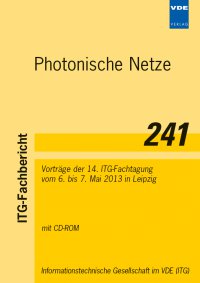Study of a Real IP over DWDM Network with more than 1000 Nodes
Conference: Photonische Netze - Vorträge der 14. ITG-Fachtagung
05/06/2013 - 05/07/2013 at Leipzig, Germany
Proceedings: Photonische Netze
Pages: 8Language: englishTyp: PDF
Personal VDE Members are entitled to a 10% discount on this title
Authors:
Klekamp, Axel; Gebhard, Ulrich (Bell Labs, Alcatel-Lucent Deutschland AG, Lorenzstrasse 10, 70435 Stuttgart, Germany)
Abstract:
Multilayer network optimization combined with increased network flexibility has gained much interest as the IP traffic growth (accelerated by e.g. new video services, IPTV, cloud computing, etc.) has a large impact on the physical layer needing to provide optical bypass and/or elastic and transparent optical transport. Furthermore, a recent trend for telecom operators is to shrink the size of the hierarchical (IP) core network and deploy fewer and bigger switching locations. To evaluate the potential gain on network efficiency of this strategy in meaningful network scenarios a much larger number of nodes is required as used in previous network studies. We evaluated a real protected network (British Telecom) with more than 1000 physical nodes by varying the fraction of core/metro network nodes to find the optimum network size regarding cost and power efficiency of elastic in comparison to MLR IP over DWDM networks. A new detailed multi-layer cost and power model was utilized. Both network layers were simultaneously optimized for a total traffic throughput of 350 Tbps (forecast for 2020) to minimize cost (CAPEX) and power consumption allowing for a mostly transparent (translucent) network including 1+1 protection and using a flexible frequency grid of 12.5 GHz in the WDM layer. The network studies showed on one side no significant benefit for any of the network concepts included, neither for a hierarchical/flat nor for a MLR/elastic network concept. On the other side, the results also confirmed that (a) the use of the flex grid is beneficial for both, MLR and elastic network scenarios and (b) the elastic network approach can be restricted to a low number of bit rates of about 3 to 4. The latter one will significantly reduce the hardware effort for elastic transponders and the complexity of the node architecture and of the control plane.


